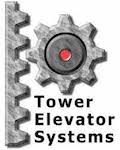Five Levels of Trac-Cab® Rack and Pinion Elevator Safety
Safety, Code compliance, and mitigation of liability exposure are fundamental design objectives we consider in all our design and manufacturing activities.
- Positive Rack and Pinion Mechanical Connection, Engineered and Maintained to the A17.1 Elevator Code Requirement for an 8:1 Safety Factor at both the Drive and Safety Pinions.
- Dual Drive and Safety Systems on all Trac-Cab® Models provide redundancy, safety and efficiency.
- UL Classified Elevator Control System based on Siemens Fail-Safe S7-300FS Safety PLC & PROFIsafe Network with Safety I/O
- Technically Advanced Speed and Position Control via precision Quadrature Encoder, the Siemens S7-300FS Safety PLC and the SEW MoviDrive VFD with Fail-Safe Technology
- Independent Dual Rack and Pinion Safety System per the Code, actively monitored by the Safety PLC for Operational Condition and Activation. System is easily and remotely tested from the Ground Station HMI.
Trac-Cab® Rack and Pinion Mechanical Safety
Unlike a traditional Roped Traction Drive Elevator, Rack and Pinion machines provide a positive mechanical engagement between the Pinion Gears and the Rack Column. This prevents any possibility of slipping and provides for precise control of position along the vertical travel path.
The positive connection means; if you stop the Pinion Gears from turning, you will stop the elevator. Each Trac-Cab® Dual Drive Unit employs; Dynamic Braking for normal stopping, Fail Safe Motor Brakes for parking and E-Stop conditions and Dual Independently Actuated Fail Safe Rack and Pinion Over Speed Safeties in the unlikely event of an Over Speed Condition. The Safeties are active regardless of system power.
The Dual Drive and Safety Design allows for redundancy and maintains the full 8:1 Safety Factor at the Drive and Safety Pinions. It is common to see a multiple drive Rack and Pinion elevator with a single Safety Pinion. This potentially reduces the Safety Factor at the Safety Pinion to 4:1 or less of the Code requirement. The Trac-Cab® Dual Drive and Safety design eliminates this potential safety and Code issue.
Trac-Cab® Fail Safe Safety PLC Control Technology
- UL Classified Fail Safe Elevator Control System
- Powered by the Siemens S7-300FS Safety PLC
- Sirius Force Guided Category 0/1 Devices
- Siemens PROFIsafe Distributed Network
- Safety PLC Continuously Monitors System Health
- Fail Safe VFD Drive Control by SEW Eurodrive MoviDrive
- Fail Safe Mechanically Applied Brakes Controlled by Safety PLC and Safety I/O
- Dual HMI Touch Screen Interface Points for User and Technician Access Gives Powerful System Status and Diagnostic Information
- Simple Remote Initiation of Code Required Safety Testing
Machine controls are essential to safe operation and movement of people in elevators and escalators. Technology has moved the market to accept the PLC as an improved method of managing this process, very much parallel with most of the world’s processes becoming digitized.
The safety PLC is an improvement over the non-safety PLC, born from the need for greater reliability and safety for operation involving the risk of injury or property loss. The elevator application is a perfect example of this use as the goal is to reduce the risk of injury to the lowest possible percentage.
The benefit of using FailSafe PLC control for elevators is reduction of the risk of injury and property damage. Manufacturers, owners and riders can have greater confidence in the reliability of the system performance through the use of this higher technology.
Trac-Cab® Systems Design Summary
Dual Drive/Dual Safety System Utilizes:
- Advanced Siemens FailSafe Technology
- UL Classified Elevator Controller
- Dual Dynamic and Mechanical Parking Brakes
- Dual Independent Safeties
This configuration achieves rack efficiency, redundancy for safety and maintains the required 8:1 Safety Factor for the Rack and Pinions, both in the Drives and Safeties.
